It is often said that the devil is in the details, meaning that the smaller, seemingly insignificant parts of something can make or break it. In the garden, secondary art, big or small, can provide subtle nuances, pull the eye through the space and reinforce the theme, artfully grounding the space in its environment. Think of these pieces as supporting actors in a major production. Let’s take a look at some sculptures that function as supporting actors and see why and how they work.
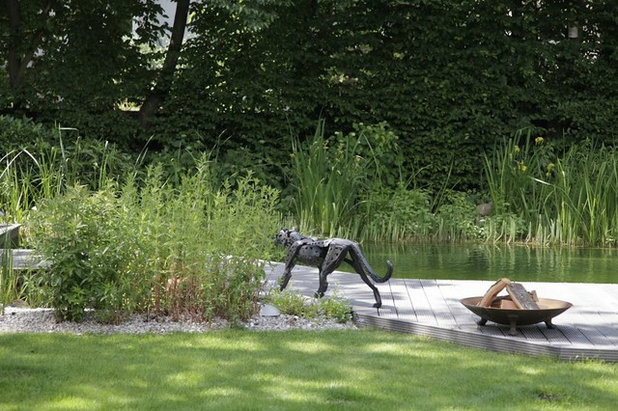
Berliner Gärten Berlin-Brandenburg
The metal sculpture of a big cat shown here functions as a secondary sculpture because it is partially obscured by garden plants, isn’t on axis with a main sightline and shares focus with the fire pit and the garden at large. This piece functions appropriately because the cat is posed in a naturally relaxed position while “moving” into a portion of the garden that appears uncultivated. Its hues aren’t garish, and they don’t attract attention, as they blend in with the hardscape. The artwork’s positioning evokes a sense of exploration in the eye of the visitor, which, in turn, causes the visitor to want to explore the rest of the space.
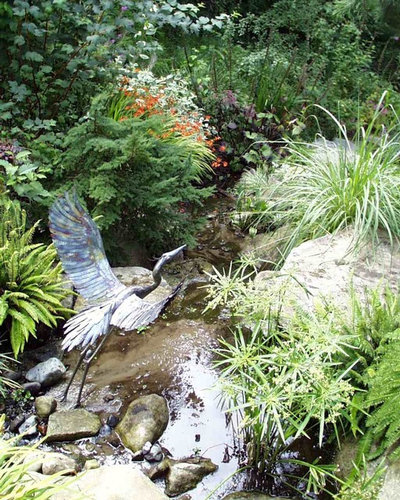
Exteriorscapes llc
This metal heron is theme-appropriate. How many koi pond owners have had unwelcome visits by blue herons? This piece functions as secondary sculpture because it reinforces the theme of the water garden and its coloration blends in with the surrounding rocks. The pond and surrounding garden remain the focal points of this space. Additionally, the sculpture adds implied movement, bringing the space to life.
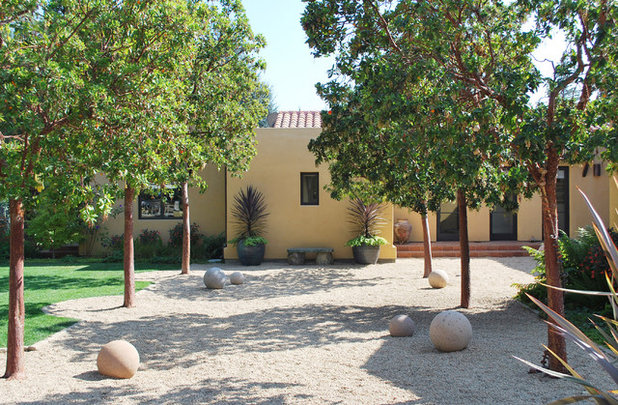
Ana Williamson Architect
These stone spheres placed along the sides of a pathway function as secondary sculptures because they reinforce the allée of trees and lead the eye to the focal point, which is the home. Because there are several, no single sphere attracts attention to itself. Additionally, the spheres form a relationship with the planters and with the home’s stucco finish.
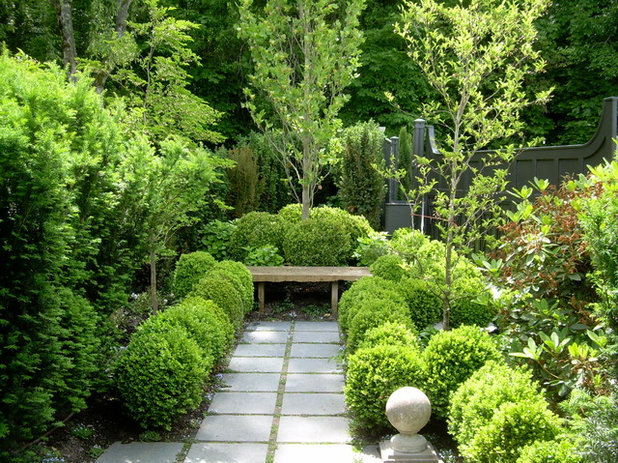
Francine M Day Landscape Architecture
The sphere-shaped finial shown here is an appropriate choice for secondary sculpture in this garden because it is offset, allowing the bench to act as the focal point. It relates to the pavers in color and texture, and relates to the ball-shaped boxwood (
Buxus sp.). The formal presence of the finial reinforces the traditional theme of this garden.
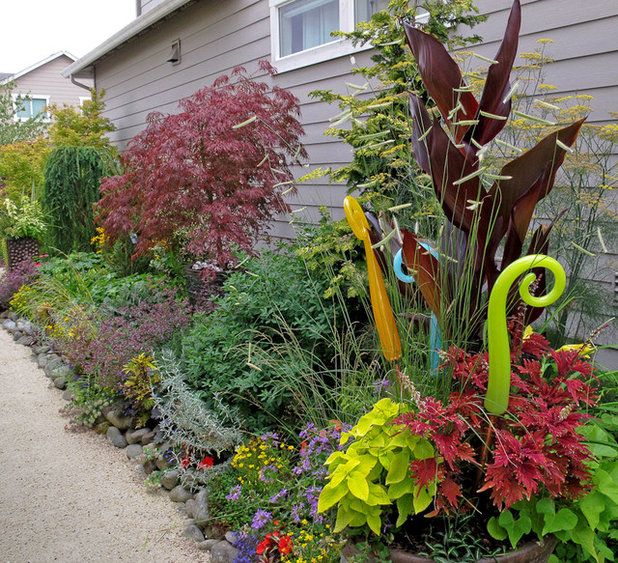
Personal Garden Coach
The vividly hued glass pieces by Barbara Sanderson shown here hold their own without competing with the coleus (
Solenostemon scutellarioides). Their off-center placement in this garden builds a sense of anticipation of what lies ahead. If they were placed on axis at the end of a pathway and surrounded by dark green foliage, they could easily function as primary sculpture.
Make Your Garden Sparkle With Glass Art
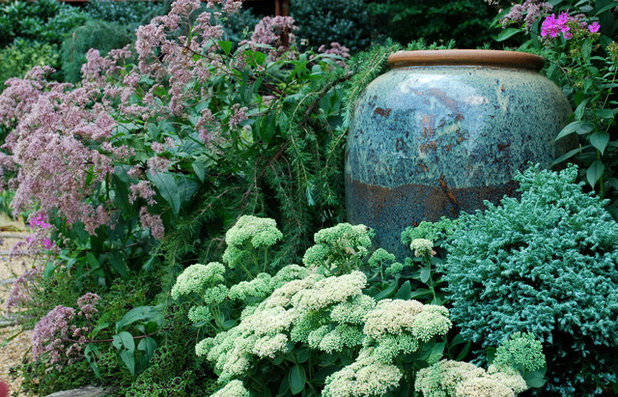
Jay Sifford Garden Design
Don’t overlook the opportunity to use ceramic pottery as garden sculpture. This pot, although large in scale, functions as a secondary sculpture because it is tucked away in a planting bed and placed alongside a path. Additionally, its coloration blends harmoniously with the planting scheme. The lip of the pot mimics the hues found in the blooms of the Joe Pye Weed (
Eutrochium purpureum, USDA zones 4 to 9; find your zone), while the blue coloration speaks to both the color and shape of the ‘Curly Tops’ false cypress (
Chamaecyparis pisifera ‘Curly Tops’, zones 4 to 8).
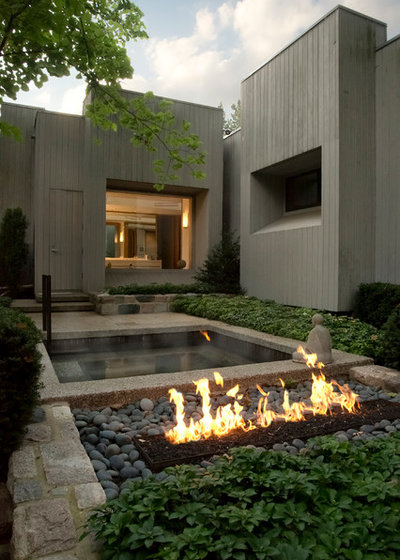
Michael J. Dul & Associates, Inc.
The small Buddha sculpture in this garden almost goes unnoticed. Its off-center placement, small size and neutral coloration that blends with the home cause it to play a supporting role. And what could compete with that fire feature as a focal point?
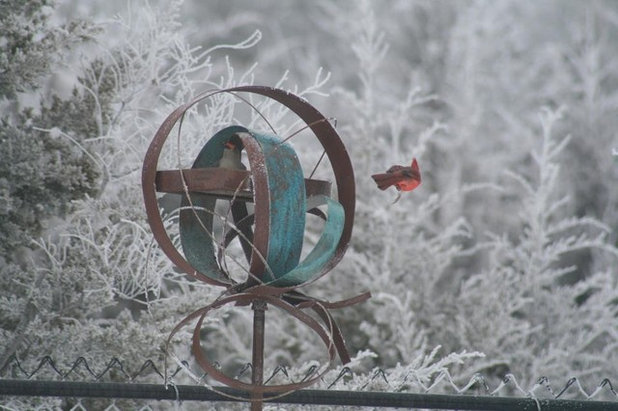
Benjamin Vogt / Monarch Gardens
Wind sculptures are seldom sited as focal points because of their tall, slender shapes and generally subtle coloration, but they are unsurpassed as secondary pieces. A well-designed wind sculpture will move in the slightest breeze, bringing an additional layer of interest to the garden.
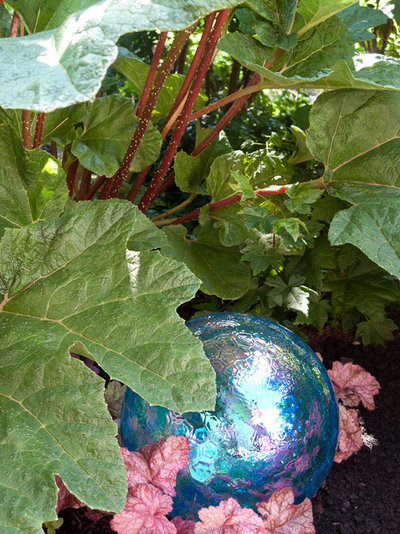
Le jardinet
Gazing balls, with their reflective surfaces, are unsurpassed at bringing light into the shade garden. They are best used not as focal points but as supporting actors, tucked into niches and among plants.
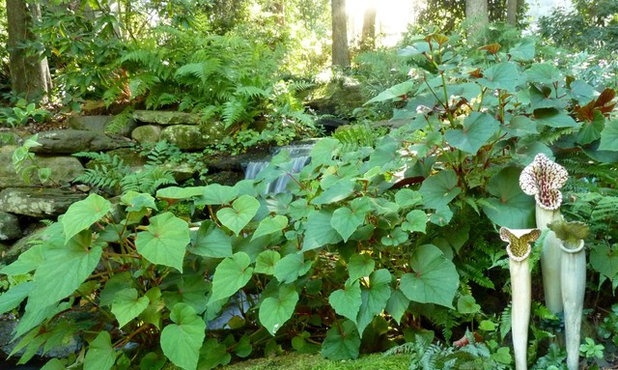
Jay Sifford Garden Design
Art benefits this naturalistic pond-side garden by focusing the eye and subtly reinforcing the space’s theme. The three ceramic pitcher plants, created by artist Marcia Donahue, are a wise choice, because pitcher plants naturally grow in moist to wet conditions. The lighter hues of the sculptures subtly stand out from the sea of greens in the planting mix, and their lids’ shape reinforces that of the leaves of the hardy begonias (
Begonia grandis,
zones 6 to 7).





